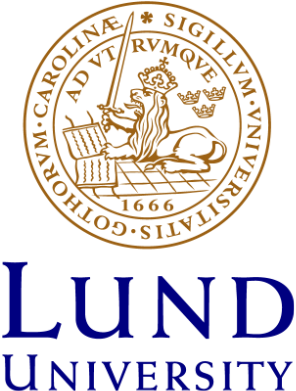Search results
Filter
Filetype
Your search for "*" yielded 534994 hits
Köpets dynamik: Om föränderlighet och spontanitet i konsumenters köpbeteende
The Mediatization of Foreign Policy : Political Decision-Making and Humanitarian Intervention
Security through European integration or flexible autonomy : Ambivalence in Sweden’s position on the Eastern Partnership?
This article explores Sweden’s multiple roles in foreign policy in relation to its actions as an EU member state, seeking also to contribute to the understanding of small-state roles and behaviour at the dawn of a new age of uncertainty in Europe. Based on analytical tools derived from role theory within foreign policy analysis, as well as European integration theory, the article presents an analy
Shoreline displacement and human resource utilization in the southern Baltic Basin coastal zone during the early Holocene: New insights from a submerged Mesolithic landscape in south-eastern Sweden
Epigenetic modifications inlysine demethylases associate with survival of early-stage NSCLC
Background: KDMlysine demethylase family members are related to lung cancer clinical outcomes and are potential biomarkers for chemotherapeutics. However, little is known about epigenetic alterations inKDMgenes and their roles in lung cancer survival.Methods: Tumor tissue samples of 1230 early-stage non-small cell lung cancer (NSCLC) patients were collected from the five independent cohorts. The 3
Abstinent Masculinity : Christian Responses to the Sexual Revolution in Sweden
Unbiased Adaptive LASSO parameter estimation for diffusion processes
The adaptive Least Absolute Shrinkage and Selection Operator (aLASSO) method is an algorithm for simultaneous model selection and parameter estimation with oracle properties. In this work we derive an adaptive LASSO type estimator for diffusion driven stochastic differential equation under weak conditions, specifically that the algorithm does not rely on high frequency properties.All conditional m
Tysta områden i Sverige : En kartläggning av initiativ, kunskap och erfarenheter
Open-Loop Optimal Control of Chromatographic Separation Processes
Chromatography is an important separation process for several industries due to its ability to separate components with similar physical properties, which are difficult to separate otherwise. This method may also give high product purity, which is necessary for production of biopharmaceuticals and fine chemicals. However, conventional feedback control systems cannot be utilized to control most chr
Holocene Hydroclimate Variability in Central Scandinavia Inferred from Flood Layers in Contourite Drift Deposits in Lake Storsjön
Despite the societal importance of extreme hydroclimate events, few palaeoenvironmental studies of Scandinavian lake sediments have investigated flood occurrences. Here we present a flood history based on lithological, geochemical and mineral magnetic records of a Holocene sediment sequence collected from contourite drift deposits in Lake Storsjön (63.12° N, 14.37° E). After the last deglaciation,
Essays on economic behavior, focusing and auctions
This thesis contributes to research on experimental and behavioral economics as well as auction theory. It consists of five papers.The first paper, Differences Attract: An Experimental Study of Focusing in Economic Choice, studies whether individuals' decisions are affected by focus effects. The focus effect suggests that individuals focus more on an attribute that has a larger difference among th
Snedvriden debatt om psykisk ohälsa hos unga
III-V Nanowire Array Solar Cells: Optical and Electrical Modelling
This thesis describes optical and electrical modelling of vertically oriented III-V semiconductor nanowire array solar cells (NWASCs).In the optical studies, three-dimensional electromagnetic modelling was carried out with the scattering matrix method and the finite element method. Shockley–Queisser detailed balance analysis was first applied to a dual-junction NWASC in which both junctions were w
Separate and combined associations of obesity and metabolic health with coronary heart disease : A pan-European case-cohort analysis
Aims: The hypothesis of 'metabolically healthy obesity' implies that, in the absence of metabolic dysfunction, individuals with excess adiposity are not at greater cardiovascular risk We tested this hypothesis in a large pan-European prospective study. Methods and results: We conducted a case-cohort analysis in the 520 000-person European Prospective Investigation into Cancer and Nutrition study (
Different glucagon effects during DPP-4 inhibition versus SGLT-2 inhibition in metformin-treated type 2 diabetes patients
Aims: Previous studies have shown that dipeptidyl peptidase (DPP)-4 inhibition lowers glucagon levels whereas sodium-glucose co-transporter 2 (SGLT-2) inhibition increases them. This study evaluated the extent of these opposite effects in a direct comparative head-to-head study. Methods: In a single-centre, randomized study with a cross-over design, 28 metformin-treated patients with type 2 diabet
A retrospective investigation of hexavalent chromium allergy in southern Sweden
Background: Historically, allergic contact dermatitis caused by hexavalent chromium [Cr(VI)] in cement was the most common cause of invalidity attributable to skin disease in Sweden. Since the legislation to reduce Cr(VI) in cement was introduced in 1989, we rarely see allergic contact dermatitis caused by cement. Objectives: To examine the frequency of contact allergy to Cr(VI) in southern Sweden
10 år med BDD-studien har gett bättre diabetesdiagnos hos barn : Studiens analysbatteri är nu klinisk rutin och kunskapen om olika diabetessjukdomar har ökat
The Swedish study Better Diabetes Diagnosis (BDD) has now been ongoing for ten years and detailed information and blood samples have been collected from more than 8000 children and adolescents with newly diagnosed diabetes. We have been able to demonstrate that by means of HLA diabetes antibodies and C-peptide the discrimination between type one and type 2 diabetes is improved. These analyses are
Absolute Quantitation of SPECT Studies
Methods for absolute quantitation of SPECT images provide an estimate of the activity uptakes in various organs and tissues in units of (M)Bq or (m)Ci. However, because tomographic SPECT images generally are hampered by several physical and camera-specific effects, accurate and precise compensation methods are required. The most important effects are (1) photon attenuation in the patient resulting
Case Studies of Interprofessional Education Initiatives From Five Countries
Background: Although teamwork and interprofessional collaboration arecritical to patient safety, nursing, medical, and allied health graduates oftenfeel ill-prepared to confidently communicate and collaborate with other teammembers. While interprofessional education (IPE) has been advocated as a wayof addressing this issue, there are multiple barriers to its systematic and sustained integration in
